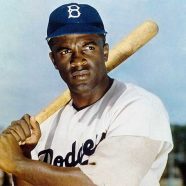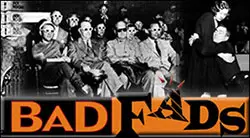Jackie Robinson Breaks Color Barrier
Today in Black History – Jackie Robinson Breaks Color Barrier
[wp_ad_camp_1]
1894 – Blues singer Bessie Smith was born in Chattanooga, Tennessee. Smith, known as the “Empress of the Blues,” sold more than 800,000 copies of her first hit song, “Downhearted Blues,” a staggering number at that time. A great star of the vaudeville circuit, Bessie was elected to the Rock and Roll Hall of Fame in 1989.
[wp_ad_camp_2]1947 – First baseman Jackie Robinson broke the color barrier in Major League baseball, suiting up for the Brooklyn Dodgers. The barrier had been in place as a “Gentleman’s Agreement” for more than 50 years.
Robinson was a phenomenal athlete lettering in four sports at UCLA. He played in the Negro Leagues for the Kansas City Monarchs alongside Hall of Famers Josh Gibson and Satchel Paige, but instead of fanfare and hoopla, he was greeting in the Major Leagues with derision and hostility.
Robinson was unable to stay in hotels and eat in the same restaurants as his teammates in many towns and was taunted with racist taunts and jeers on the road by fans and opposing teams. Worse, several of his own southern-born teammates signed a petition, refusing to play alongside him.
Nevertheless, Robinson persevered, playing so well the he won the fans over on his way to being named the inaugural “Rookie of the Year.” Two years later, he led the National League in batting and was named the league’s “Most Valuable Player.” Jackie was inducted into the Baseball Hall of Fame in 1962 and Died in 1972 at the age of 53.
Jackie Robinson’s Groundbreaking Moment: Breaking the Color Line on April 15, 1947
Introduction
April 15, 1947, marks a pivotal moment in both sports and civil rights history, as Jackie Robinson broke the color barrier in Major League Baseball (MLB). Robinson’s debut as the first African American player in the MLB not only revolutionized the world of sports but also served as a catalyst for change in the ongoing struggle for racial equality in America. This article will delve into the story of Jackie Robinson’s historic achievement and the lasting impact it had on baseball and the civil rights movement.
The Color Barrier in Baseball
Before Jackie Robinson’s monumental debut, professional baseball was racially segregated. African American players were restricted to the Negro Leagues, which were established in response to the exclusion of Black players from the MLB. For decades, Black athletes were denied the opportunity to showcase their talent on the same stage as their white counterparts, reinforcing racial inequality within the sport.
Jackie Robinson: A Trailblazer for Change
In the mid-1940s, Branch Rickey, the general manager of the Brooklyn Dodgers, recognized the need for change and began seeking a talented African American player to integrate the team. Rickey found his ideal candidate in Jackie Robinson, who possessed not only exceptional athletic ability but also the strength of character required to face the inevitable racism and hostility that would come with breaking the color barrier.
Robinson’s signing with the Dodgers was a bold and controversial move that challenged the status quo of racial segregation in baseball. It set the stage for Robinson’s groundbreaking debut on April 15, 1947, when he took the field for the Brooklyn Dodgers as the first African American player in the MLB.
Robinson’s Impact on Baseball and Beyond
The significance of Jackie Robinson’s debut cannot be overstated. By breaking the color barrier, he paved the way for other talented Black athletes to join the MLB and compete on an equal footing with white players. This integration of baseball not only enriched the sport with a wealth of previously untapped talent but also demonstrated the power of sports to transcend racial barriers and promote social change.
Robinson’s accomplishments on and off the field resonated far beyond the world of baseball. As a visible symbol of the civil rights movement, he helped to raise awareness of the ongoing struggle for racial equality and inspire others to join the fight. His courage and determination in the face of adversity served as a testament to the resilience and strength of the African American community.
Conclusion
Jackie Robinson’s triumphant breaking of the color line on April 15, 1947, forever changed the landscape of American sports and society. As the first African American to play in Major League Baseball, Robinson’s legacy continues to inspire generations of athletes and civil rights activists. His groundbreaking achievement serves as a powerful reminder of the importance of pushing boundaries and challenging the status quo in the ongoing pursuit of racial equality and social justice.
Bibliography
- Eig, J. (2007). Opening Day: The Story of Jackie Robinson’s First Season. New York: Simon & Schuster.
- Rampersad, A. (1997). Jackie Robinson: A Biography. New York: Alfred A. Knopf.
- Robinson, S., & Long, L. (199
- America’s Story – http://www.americaslibrary.gov/jp/bball/jp_bball_jackie_1.html
- Great Black Heroes – https://www.greatblackheroes.com/sports/jackie-robinson/











